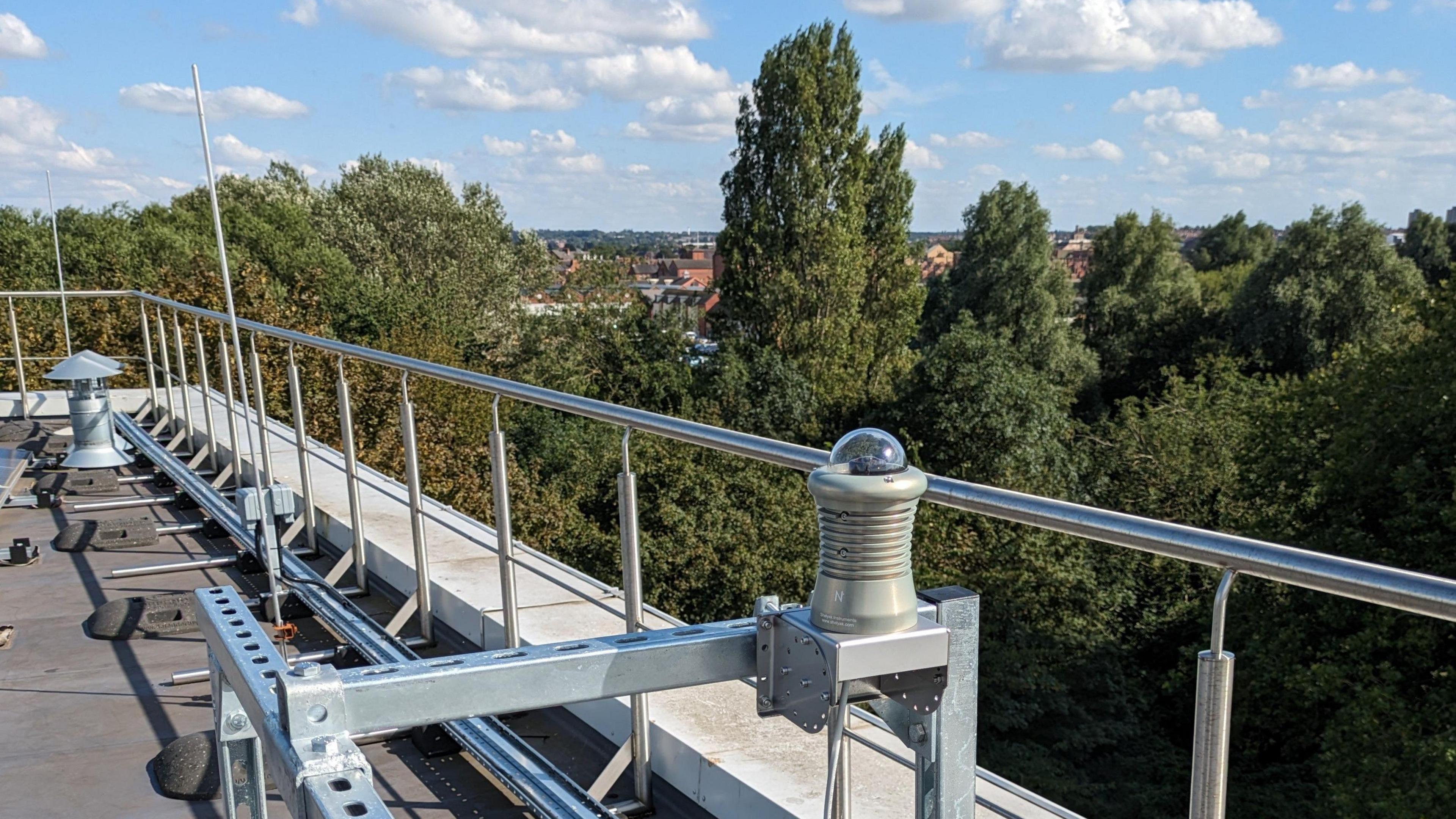Search for meteorite as fireball lights up skies

New technology tracked the fireball passing the East Midlands on Saturday
- Published
The search for a suspected meteorite has started after a bright fireball was seen travelling over the East Midlands.
The University of Leicester said a new specialist camera at Space Park Leicester captured the object flying over the region on Saturday.
It was seen over Nottinghamshire at about 19:30 BST before associated fragments landed within the Alfreton area of Derbyshire.
Prof John Bridges, from Space Park Leicester, said the material would have "a dark shiny fusion crust" and look "really quite different" from anything surrounding it.
New technology was able to establish the trajectory of the meteor, including where the meteorite associated with it landed.
Prof Bridges urged people to keep an eye out as the meteorite could have landed in somebody's back garden or driveway.

Prof Bridges said he was confident the meteorite would be within a "few hundred metres" of the precision point on the map
It is estimated about 100g (0.22lb) of stone meteorite landed on Earth following the fireball, he said.
Prof Bridges said: "You can identify a meteorite as classically it has a dark shiny fusion crust which will look really quite different from anything surrounding it.
"It doesn't look like something from your patio or back garden. It's got that dark glossy fusion crust – you'll find lots of images online.
"[Fallen meteorites] might land in a stream or a muddy field so it can be difficult to ever find it.
"But quite a lot might fall on somebody's front drive or something like that and be recognisably different and be recognised as a meteorite."
The fireball was captured using a 360-degree camera at Space Park Leicester, which is part of FRIPON – the Fireball Recovery and InterPlanetary Observation Network.

Prof Bridges said falling meteorites was a "natural phenomenon"
The network aims to detect fireballs and help scientists recover meteorites that fall to Earth.
"There's a continual influx of cosmic dust and meteorites falling to the Earth," added Prof Bridges. "[We can learn] a lot about space from a fallen meteorite.
"Historically we haven't really had any way of accurately tracking down where the meteorite stone associated with it has landed.
"Because the technology is new, how many times we're going to be able to turn a fireball trajectory into a recovered stone that we can go and pick up is an interesting question.
"It's just about putting together local reports. Before new technologies we just haven't had a way of putting the two together."
Scientists are keen to recover fallen meteorites quickly as they can become contaminated soon after landing, said Prof Bridges.
Anyone who suspects they have found anything of interest has been encouraged to contact the National Space Centre or National History Museum.

The 360-degree camera has been installed on the roof of Space Park Leicester
Get in touch
Tell us which stories we should cover in Derby
Follow BBC Derby on Facebook, external, on X, external, or on Instagram, external. Send your story ideas to eastmidsnews@bbc.co.uk, external or via WhatsApp, external on 0808 100 2210.
Related topics
- Published17 May 2024

- Published28 May 2024
